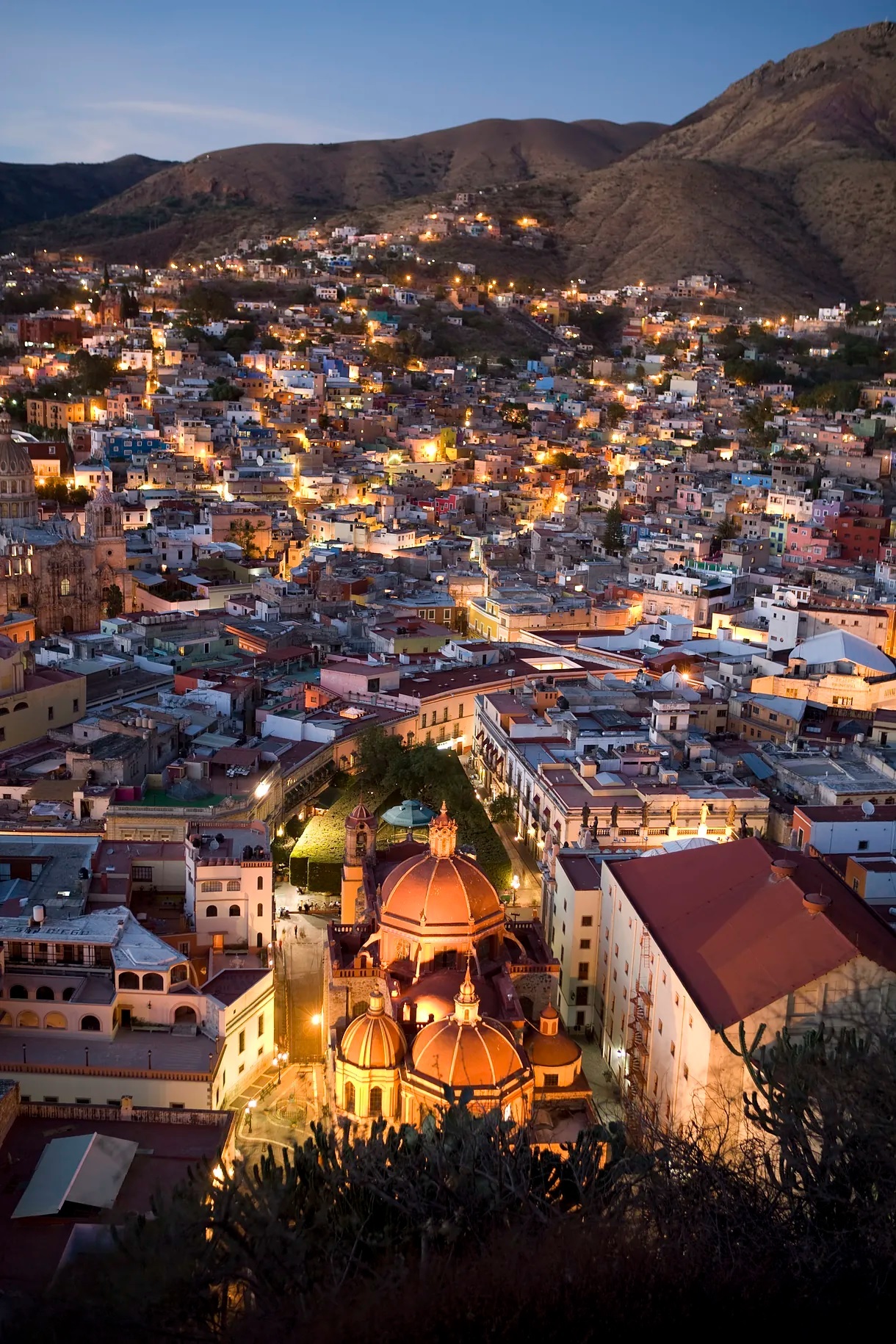Diego María de la Concepción Juan Nepomuceno Estanislao de Rivera y Barrientos, better known as Diego Rivera, was born on December 8, 1886, on Positos Street, one of the streets that make up the impossible map of the city of Guanajuato, a labyrinth of mysterious tunnels, secret passageways, alleys, and crumbling and wonderful squares that wind sinuously up high hills. The birthplace of the great Mexican muralist is a multicolored city, a cubist jumble of houses, baroque churches, and palaces in pastel tones. There are no traffic lights or flashy signs in this viceregal city that could spoil its title of World Heritage Site, but there is a cultural pulse that attracts students and travelers from around the world.
The sunny steps of the Juárez Theater serve as an impromptu seat for many of them. This beautiful auditorium is the main venue of the International Cervantino Festival, the most powerful cultural celebration in Latin America. "Every year, for three weeks, more than 40 countries bring the best of their culture to Guanajuato," explains Gabriel Alcaraz, official guide. "Theater plays, opera, orchestras, painting, sculpture, architecture, gastronomy, and outdoor rock concerts turn these streets into a fascinating theater."
It will happen again in a few days (from October 11 to 27) when the Cervantino, as it is affectionately called, celebrates its 52nd edition. Its true origin, however, dates back to 1953. The blame lies with Professor Enrique Ruelas Espinosa, who brought the Cervantine Interludes to the improvised stage of the San Roque square. The spark of the Manchegan nobleman has endured to this day. And between the festival and the cultural heritage of the Iconographic Museum of Don Quixote (MIQ), with over a thousand Quixote-related pieces, Guanajuato had to be, and is, the Cervantine Capital of America.
The essential route through the viceregal city includes these and other squares where you can have a coffee, a typical dish (like the mining enchiladas), and stop to admire the many street sculptures like La Giganta, "the Guanajuatan Dulcinea," which pays homage, once again, to the Golden Age writer. It is a perfect city for walking, although it holds many surprises, including the subworld of tunnels that run beneath its foundations. It was a colossal work carried out after the 19th-century floods to channel the water that lifted streets, churches, convents... all of Guanajuato, about 20 centimeters.
But nothing demonstrates the verticality of this capital like taking the funicular to the Pípila monument-viewpoint, the heroic character who helped Miguel Hidalgo's insurgent troops win the first battle of the Mexican War of Independence. From the top, Guanajuato sprawls out in all its splendor. In the high hills that embrace it, the first silver mines were found in the mid-16th century that made the Creoles very wealthy. "When the German scientist Alexander von Humboldt traveled to Guanajuato in 1799, he estimated that two-thirds of all the silver produced in the world came from this city," explains Alcaraz.
The mining boom led to the construction of a string of baroque temples and neoclassical palaces whose towers can be seen here and there from the viewpoint. Then, in the Basilica of Our Lady of Guanajuato, a solid silver pedestal supports the Virgin. "Nothing less than 40 kilos of pure silver, a gift from the mine owners." The mining heritage is also seen in the university of 1732, which appears on the 1,000 Mexican peso bills and houses the country's best mining school. Climbing the majestic staircase, with its 86 steps, is a must for tourists.
It is also essential to participate in the famous callejoneadas, the route of alleys enlivened by the songs and guitar playing of the tunos. During the Cervantino season, they are celebrated every day. There are several routes, but all of them stop at the Kiss Alley. Tradition says that lovers must kiss here on the third step to have 15 years of good luck, otherwise, they will have seven years of bad luck. Another stop in Guanajuato is at Positos Street, 47, where Rivera was born, and where his House-Museum stands. Rescued by his daughter Lupita Rivera Marín, the building houses preliminary drawings, watercolors, and engravings, although no murals.
